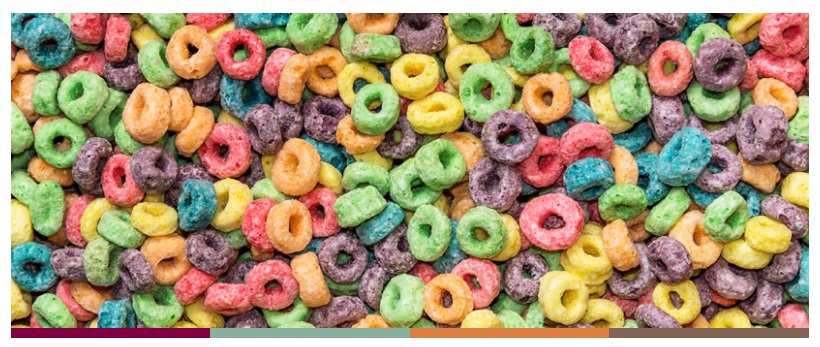Artificial Colors vs. Natural Dyes

Chemical food dyes can create bright, sometimes unnatural colors in food. Can they be safe to eat?
Parents have raised concerns about artificial colors because they are present in some of kids’ favorite foods. Dr. Ruth MacDonald is a registered dietitian and chair of the Department of Food Science & Human Nutrition at Iowa State University. She believes parents present some good questions.
“For most consumers, not having chemicals in their food seems like a logical expectation. No one would not want to consume foods laden with harmful chemicals, and the concept of eating ‘real food’ is very appealing,” she said.
In response to requests from shoppers for more natural foods, many food companies have changed their products in recent years.
“Removing artificial colors and flavors would seem like an easy thing to do. We don’t need to have brightly colored or flavored food to ensure our nutritional needs are met. Some of these may be replaceable with natural colors and flavors, which will be different mixtures but still chemicals,” Dr. MacDonald said.
Sometimes, as with Kraft macaroni and cheese, no one noticed. But when Trix cereal changed its recipe, fans were so unhappy that the cereal switched back to the original bright colors. The discussion illustrates that color is very important in making food appealing, since we often “eat with our eyes.” We prefer the color of our food to match the taste, the American Chemical Society explains.
Artificial dyes and pigments were developed to give foods more vibrant color. Dr. MacDonald said that additives derived from petroleum oil are identified with Food, Drug and Cosmetic numbers, such as FD&C Blue No. 1. “Each additive is tested for high purity and used in very small amounts. These additives provide no nutritional benefit, but enhance the pleasure and enjoyment of foods,” she said.
Several studies have been conducted over the years to determine if artificial colors or additives have an effect on children.
“While some studies found some negative effects in sensitive individuals, overall the evidence does not support a link between consumption of foods containing artificial colors or additives and behavior,” she said. “It has been concluded that some individuals may react to specific additives, but the overall population is not at any health risk from these additives.”
The Food and Drug Administration (FDA) has more information about these studies.
What about natural colors? Dr. MacDonald said natural dyes are usually extracted from vegetable and fruit peels using chemical solvents. “Typically, these natural colors are less pure and less stable than their artificial counterparts, and are comprised of fairly complex chemical structures, therefore other changes in the foods may need to be made to obtain the same product quality,” she said.
Although natural colors may seem to carry no risk, Dr. MacDonald said they have not been tested as thoroughly as artificial colorings. Natural colorings also do not look or taste the same as common FD&C colors.
“Whether consumers will accept foods that look and taste different as a trade-off to removing artificial colors and flavors is yet to be determined,” she said.
Artificial colors have been tested and found to be safe in the amount present in food. Natural colorings derived from fruits and vegetables continue to be developed and sometimes used in processed foods.
